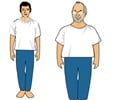A study in the March 5 issue of JAMA claims that the opening or expansion of a casino in a community is associated with increased family income.

Jessica C. Jones-Smith, Ph.D., of the Johns Hopkins Bloomberg School of Public Health, Baltimore, and colleagues assessed whether openings or expansions of American Indian-owned casinos were associated with childhood overweight/obesity risk. The authors hypothesized that casinos could alter individual, family, or community resources, reducing barriers to healthful eating and physical activity and decreasing the risk of overweight/obesity. "These resources could include increased income, either via employment or per capita payments, and health-promoting community resources, such as housing, recreation and community centers, and health clinics."
The researchers used body mass index (BMI) measurements from American Indian children (ages 7-18 years) from 117 school districts that encompassed tribal lands in California between 2001 and 2012 and compared children in districts with tribal lands that either did or did not gain or expand a casino. Besides BMI, other measures included in the analysis were per capita annual income, median (midpoint) annual household income, percentage of population in poverty and total population.
Of the 117 school districts, 57 either opened or expanded a casino, 24 had a preexisting casino but did not undergo expansion, and 36 did not have a casino at any time during the study period. Forty-eight percent of the measurements of the children (n = 11,048) were classified as overweight/obese. The researchers found that every 1 casino slot per capita gained was associated with an increase in average per capita annual income, a decrease in the percentage of the population living in poverty, and a decrease in the percentage of overweight/obesity.
The authors speculate that the association found in this study between casinos and childhood overweight/obesity may be from both increased family/individual and community economic resources, but emphasize that further research is needed to better understand the mechanisms underlying this association.
(doi:10.1001/jama.2014.604; Available pre-embargo to the media at /media.jamanetwork.com)
Advertisement
Editorial: Socioeconomic Influences on Child Health - Building New Ladders of Social Opportunity
Advertisement
"A casino in every neighborhood is not the answer, but increasing family income and removing other pressures that reduce the capacity of families to invest in their children should be part of the solution. While incremental improvements like expanding preschool and extending health insurance may help add new rungs to the existing ladder of social opportunity, the fact is that these ladders are broken, outdated, and designed for a different era and need to be redesigned and transformed from the bottom up."
Editor's Note: Please see the article for additional information, including financial disclosures, funding and support, etc.
Source-Eurekalert











